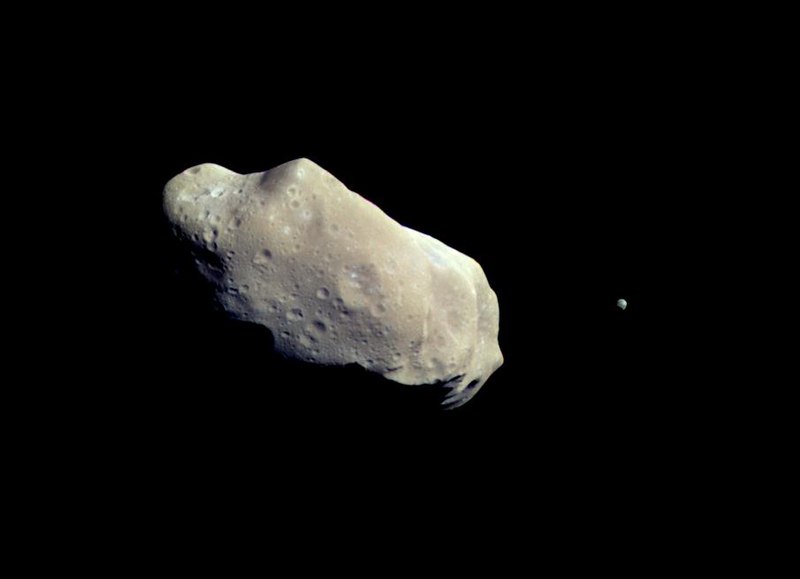پەڕگە:243 ida.jpg

قەبارەی ئەم پێشبینینە: ٨٠٠ لە ٥٧٩ پیکسەڵ. ڕێزەلووشنەکانی تر: ٣٢٠ لە ٢٣٢ پیکسەڵ | ٦٤٠ لە ٤٦٣ پیکسەڵ | ٩٠٥ لە ٦٥٥ پیکسەڵ.
پەڕگەی سەرەکی (٩٠٥ × ٦٥٥ پیکسڵ، قەبارەی پەڕگە: ٢٠ کیلۆبایت، جۆری ئێم ئای ئێم ئی: image/jpeg)
مێژووی پەڕگە
کرتە بکە لەسەر یەکێک لە ڕێکەوت/کاتەکان بۆ بینینی پەڕگەکە بەو شێوەی لەو کاتەدا بووە.
| ڕێکەوت/کات | ھێما | ئەندازە | بەکارھێنەر | تێبینی | |
|---|---|---|---|---|---|
| هەنووکە | ١٤:٥٩، ١٠ی ئەیلوولی ٢٠٢٢ |  | ٩٠٥ لە ٦٥٥ (٢٠ کیلۆبایت) | BevinKacon | Reverted to version as of 10:44, 30 January 2006 (UTC) the NASA page clearly states original resolution as Product Size: 905 x 655 pixels (w x h) |
| ٠٩:٤٢، ٢٣ی تەممووزی ٢٠٢٠ |  | ٦٧٩ لە ٤٩١ (١٢ کیلۆبایت) | Leonel Sohns | Recovered old version from archive.org | |
| ١٨:٥٥، ٢٤ی نیسانی ٢٠١٩ |  | ٧١٨ لە ٥٢٠ (٦٥ کیلۆبایت) | FriedrichKieferer | Better quality. | |
| ١١:٤٦، ١١ی ئابی ٢٠١٣ |  | ٧١٨ لە ٥٢٠ (١٧ کیلۆبایت) | Soerfm | Crop | |
| ١٠:٤٤، ٣٠ی کانوونی دووەمی ٢٠٠٦ |  | ٩٠٥ لە ٦٥٥ (٢٠ کیلۆبایت) | Arnomane | better resolution | |
| ١٩:٥٢، ١ی شوباتی ٢٠٠٥ |  | ٦٧٩ لە ٤٩١ (١٢ کیلۆبایت) | Svdmolen | NASA image of 243 Ida and Dactyl. - NASA {{PD}} |
بەکارھێنانی پەڕگە
ئەم پەڕەی 2ە ئەم پەڕگەیە بەکار دەھێنێت:
بەکارھێنانی سەرانسەریی پەڕگە
ئەم ویکیانەی دیکەی خوارەوەش ئەم پەڕگە بەکاردێنن:
- بەکارھێنان لە af.wikipedia.org
- بەکارھێنان لە af.wiktionary.org
- بەکارھێنان لە als.wikipedia.org
- بەکارھێنان لە am.wikipedia.org
- بەکارھێنان لە an.wikipedia.org
- بەکارھێنان لە ar.wikipedia.org
- بەکارھێنان لە ast.wikipedia.org
- بەکارھێنان لە az.wikipedia.org
- بەکارھێنان لە bat-smg.wikipedia.org
- بەکارھێنان لە bcl.wikipedia.org
- بەکارھێنان لە be-tarask.wikipedia.org
- بەکارھێنان لە beta.wikiversity.org
- بەکارھێنان لە be.wikipedia.org
- بەکارھێنان لە bg.wikipedia.org
- بەکارھێنان لە bjn.wikipedia.org
- بەکارھێنان لە bn.wikipedia.org
- بەکارھێنان لە bo.wikipedia.org
- بەکارھێنان لە br.wikipedia.org
- بەکارھێنان لە bs.wikipedia.org
- بەکارھێنان لە ca.wikipedia.org
- بەکارھێنان لە cs.wikipedia.org
بینینی بەکارھێنانی گشتی زیاتری ئەم پەڕگەیە.


